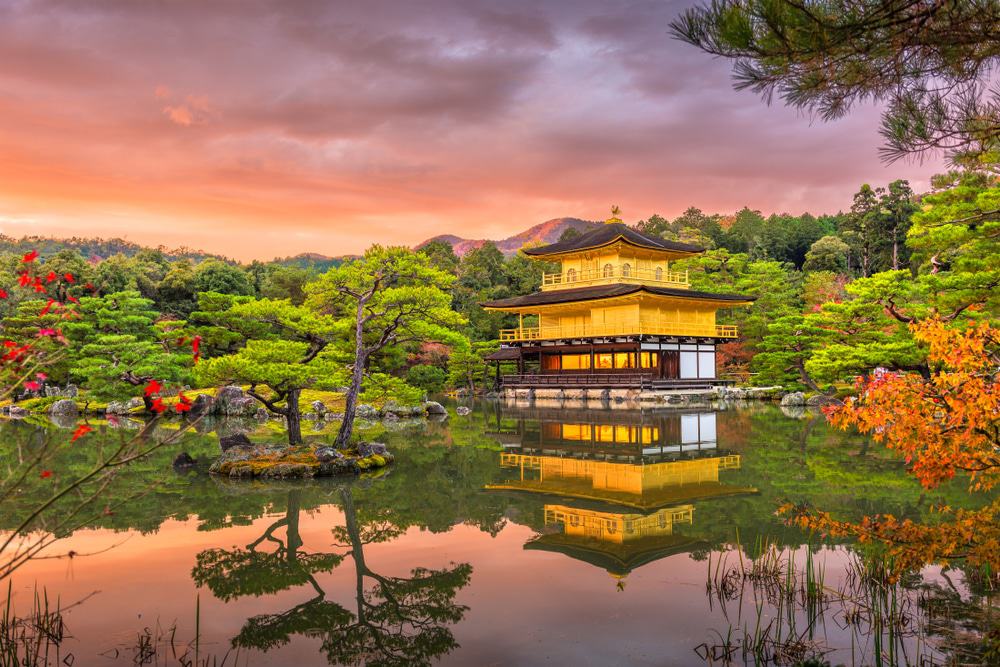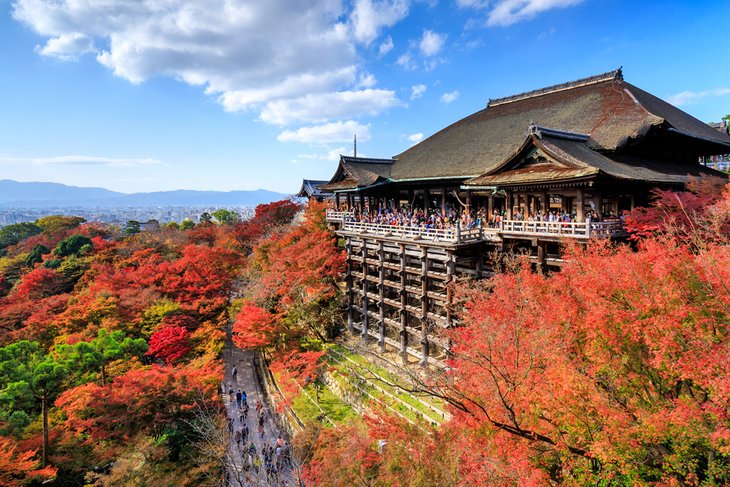
Kyoto, Japan’s imperial capital for over a thousand years, is a city that whispers stories of ancient traditions, serene gardens, and the enduring spirit of a nation. Unlike the hyper-modern pulse of Tokyo, Kyoto offers a journey back in time, a sensory immersion into a world where geishas still glide through lantern-lit alleys, vibrant vermillion gates lead to sacred spaces, and meticulously manicured landscapes inspire quiet contemplation. For travelers seeking an authentic glimpse into Japan’s rich cultural heritage, Kyoto is an unparalleled destination, a city that captivates the soul and leaves an indelible mark on the memory.
A Thousand Years of Imperial Splendor: A Glimpse into Kyoto’s Rich History
Kyoto’s story began in 794 AD when Emperor Kanmu moved the capital from Nagaoka-kyō to Heian-kyō, meaning "City of Peace and Tranquility." This marked the dawn of the Heian period (794-1185), a golden age of Japanese culture, art, and literature. For over a millennium, Kyoto served as the imperial seat, witnessing the rise and fall of shogunates, the flourishing of Buddhist art and architecture, and the development of unique cultural practices that continue to define Japan.

Related Articles about Kyoto: A Timeless Tapestry of Tradition and Tranquility:
- Lombok: Beyond Bali’s Shadow – A Paradise Unveiled
- The Golden Sands of Luxury: Discovering Saudi Arabia’s Premier Hotels and Enchanting Kingdom
- Greece: A Timeless Odyssey – Your Comprehensive Travel Guide
- Beyond the K-Wave: Unveiling the Treasures of South Korea
- Venice: A Guide to La Serenissima & Her Finest Hotels
While the capital eventually moved to Tokyo in 1868, Kyoto retained its status as the cultural heart of Japan. It was largely spared from the devastating bombing of World War II, a fortunate circumstance that preserved its invaluable historical treasures. This legacy is evident in its countless temples, shrines, palaces, and traditional wooden machiya houses, each standing as a testament to centuries of artistry and devotion.
The Crown Jewels: Kyoto’s Unmissable Attractions
Kyoto boasts an overwhelming array of attractions, each offering a unique window into its soul. To navigate this rich tapestry, here are some of the absolute must-see sites:
-
Kinkaku-ji (Golden Pavilion): An iconic symbol of Kyoto, Kinkaku-ji is a Zen Buddhist temple whose top two floors are completely covered in gold leaf. Reflected in the surrounding pond, it creates a breathtaking spectacle, especially on a sunny day. Originally a retirement villa for Shogun Ashikaga Yoshimitsu, it was converted into a temple after his death. The current structure is a reconstruction, as the original was tragically burned down by a mentally disturbed monk in 1950.
-
Fushimi Inari-taisha Shrine: Prepare to be mesmerized by the thousands of vibrant vermillion torii gates that snake their way up the sacred Mount Inari. This Shinto shrine is dedicated to Inari, the god of rice, sake, and prosperity. The trails offer a unique and unforgettable hiking experience, with each gate donated by individuals and businesses hoping for good fortune. The higher you climb, the more serene the atmosphere becomes, offering panoramic views of Kyoto.

-
Arashiyama Bamboo Grove: Step into an ethereal world as you wander through towering stalks of bamboo that sway gently in the breeze, creating a symphony of rustling leaves. This natural wonderland is a popular spot for photography and offers a sense of peace and tranquility. Nearby, you can also visit the Tenryu-ji Temple, a UNESCO World Heritage site with a beautiful Zen garden, and the picturesque Togetsukyo Bridge.
-
Kiyomizu-dera Temple: Perched on a hillside, Kiyomizu-dera offers stunning panoramic views of Kyoto, particularly during cherry blossom season and autumn foliage. Its most famous feature is its wooden stage, built without a single nail, which juts out from the main hall. The Otowa Waterfall, located at the base of the hall, is believed to have wish-granting powers, with visitors drinking from its three streams for longevity, success in studies, and a fortunate love life.
-
Gion District: Immerse yourself in the enchanting atmosphere of Kyoto’s most famous geisha district. Stroll along Hanami-koji Street, lined with traditional wooden machiya houses, many of which are exclusive teahouses and restaurants. If you’re lucky, you might catch a glimpse of a geiko (Kyoto geisha) or maiko (apprentice geisha) gracefully making their way to an appointment, their colorful kimonos and elaborate hairstyles a sight to behold.
-
Nijo Castle: A UNESCO World Heritage site, Nijo Castle was the Kyoto residence of the Tokugawa shogunate. It’s renowned for its "nightingale floors," which chirp when walked upon, serving as an early warning system against intruders. The castle’s opulent interiors, adorned with intricate carvings and vibrant screen paintings, offer a glimpse into the power and wealth of the samurai era.
-
Ryoan-ji Temple: Home to Japan’s most famous Zen rock garden, Ryoan-ji is a place of profound simplicity and contemplation. Fifteen rocks are arranged on a bed of white gravel, designed in such a way that from any vantage point, at least one rock is always hidden. The garden’s enigmatic nature invites visitors to ponder its meaning and find their own inner peace.
-
Nishiki Market: A culinary adventure awaits at Nishiki Market, affectionately known as "Kyoto’s Kitchen." This vibrant, narrow street is packed with over a hundred stalls selling a dazzling array of local produce, seafood, pickles, sweets, and culinary delights. Sample everything from fresh sashimi and grilled skewers to traditional mochi and matcha treats. It’s the perfect place to experience the authentic flavors of Kyoto.
Navigating Kyoto: Essential Travel Tips
To make the most of your Kyoto adventure, consider these practical tips:
-
Best Time to Visit:
- Spring (March-May): This is arguably the most popular time to visit, with the breathtaking beauty of cherry blossoms (sakura) painting the city in delicate shades of pink and white. Temperatures are mild and pleasant.
- Autumn (September-November): Another spectacular season, autumn transforms Kyoto’s landscapes into a fiery canvas of red, orange, and yellow foliage (koyo). The weather is crisp and cool, perfect for exploring.
- Summer (June-August): Can be hot and humid, with a risk of typhoons. However, it’s also a time for vibrant festivals like Gion Matsuri.
- Winter (December-February): Colder but less crowded. Snow can fall, creating a magical atmosphere, especially at temples. Prices are generally lower.
-
Getting Around:
- Public Transportation: Kyoto has an excellent public transportation system. The subway is efficient for reaching key areas, while the bus network is extensive and covers almost all major attractions. Consider purchasing a Kyoto City Bus & Subway One-Day Pass for unlimited travel.
- Walking: Many of Kyoto’s attractions, especially within districts like Gion and Higashiyama, are best explored on foot. This allows you to discover hidden alleys and soak in the atmosphere.
- Cycling: Renting a bicycle is a fantastic way to explore the flatter parts of the city and discover charming neighborhoods at your own pace.
- Taxis: Readily available but can be expensive for longer journeys.
-
Etiquette and Customs:
- Shoes Off: Be prepared to remove your shoes before entering temples, shrines, traditional restaurants, and many homes. Look for designated shoe racks.
- Quiet Respect: Maintain a quiet and respectful demeanor when visiting religious sites. Avoid loud conversations or disruptive behavior.
- Bowing: A slight bow is a common greeting and sign of respect.
- Eating and Drinking: Avoid eating or drinking while walking in public.
- Chopstick Etiquette: Never stick chopsticks upright in a bowl of rice, as this is associated with funerals.
- Tipping: Tipping is not customary in Japan. Excellent service is expected and included in the price.
-
Connectivity: Consider renting a pocket Wi-Fi device or purchasing a local SIM card for easy internet access to navigate and stay connected.
A Haven for Every Traveler: Accommodation Options in Kyoto
Kyoto offers a diverse range of accommodation to suit every budget and preference:
-
Ryokan (Traditional Japanese Inns): For an authentic cultural experience, a ryokan is a must. These inns feature tatami mat floors, futon beds, and often include traditional kaiseki (multi-course) dinners and breakfast. Many offer private onsen (hot springs) for a truly relaxing stay. Expect higher prices but an unforgettable experience.
-
Boutique Hotels: Kyoto has a growing number of stylish boutique hotels that blend modern comforts with Japanese aesthetics, often incorporating traditional elements into their design.
-
Business Hotels: Clean, efficient, and reasonably priced, business hotels are a popular choice for budget-conscious travelers. They typically offer comfortable rooms with essential amenities.
-
Hostels: For backpackers and solo travelers, hostels provide a social atmosphere and affordable dormitory-style or private rooms.
-
Vacation Rentals (Airbnb): Renting an apartment or a traditional machiya house can offer a more independent and local experience, especially for families or longer stays.
When to Visit: A Seasonal Symphony
As mentioned earlier, spring and autumn are the prime seasons for visiting Kyoto, offering pleasant weather and spectacular natural beauty.
-
Spring: Witness the ephemeral beauty of cherry blossoms from late March to early April. Popular viewing spots include Maruyama Park, Philosopher’s Path, and Arashiyama.
-
Autumn: Be captivated by the vibrant fall foliage from mid-October to late November. The temples of Higashiyama, Arashiyama, and the Imperial Palace grounds are particularly stunning.
-
Summer: While hot and humid, the Gion Matsuri in July is a spectacular festival with grand processions and traditional music.
-
Winter: Experience a quieter, more serene Kyoto with fewer crowds. The Kiyomizu-dera Temple is beautifully illuminated during winter.
Conclusion: Kyoto’s Enduring Allure
Kyoto is more than just a city; it’s a living museum, a sanctuary of peace, and a testament to the enduring power of tradition. From the gilded splendor of Kinkaku-ji to the mystical allure of the Fushimi Inari gates, each attraction offers a unique portal into Japan’s soul. By embracing its rich history, respecting its customs, and immersing yourself in its serene beauty, your journey to Kyoto will undoubtedly be an enriching and unforgettable experience, leaving you with a profound appreciation for this timeless jewel of Japan.





